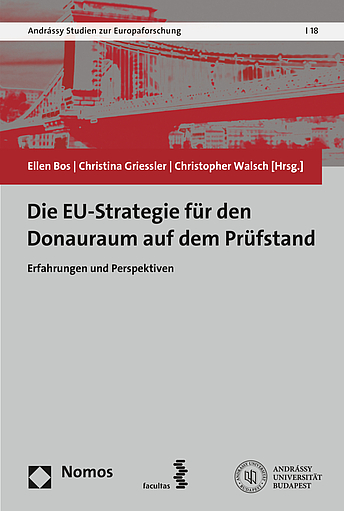englischThe EU-Strategy for the Danube Region (EUSDR) was established in June 2011 as the second macro-regional strategy of the European Union. This edited volume aims to not only assess the experiences and accomplishments of the strategy but also its deficiencies after its first years of implementation. Moreover, it discusses its future prospects. The first part of the volume addresses the development, objectives and the governance of the macro-regional strategies as well as the added value of this strategy compared to other forms of regional cooperation. The second part includes a comparison of the EUSDR with the EU Strategy for the Baltic Sea Region (EUSBSR). It suggests the prospects for additional macro-regional strategies, which are currently being devised, and analyses to what extent the EUSDR supports transnational cooperation processes. The third part of the volume deals with the EUSDRs influence on economic competitiveness in the Danube region. These contributions identify the similarities and the differences in the states abilities to foster competitiveness and innovation, thereby focusing on the importance of the connection between knowledge and competition to increase prosperity in the Danube region.
With contributions by:
Ellen Bos, Jörg Dötsch, Martina Eckardt, Stefan Gänzle, Christina Griessler, Tamás Kaiser, Kristine Kern, Greta Klotz, Boglárka Koller, Martin Koschkar, Andrea Magda Nagy, Tania Pibernik, Franziska Sielker, Wolfgang Streitenberger, Ádám Török, Martina Trettel, Christopher Walsch, Margit Westfält.
Die EU-Strategie für den Donauraum (EUSDR) wurde im Juni 2011 als zweite makroregionale Strategie der Europäischen Union verabschiedet. Der Sammelband verfolgt das Ziel, nach den ersten Jahren der Umsetzung die Erfahrungen und erreichten Ziele, ebenso wie bestehende Defizite auf den Prüfstand zu stellen und Zukunftsperspektiven zu diskutieren. Im ersten Teil stehen zum einen die Entstehung, Zielsetzung und Governance makroregionaler Strategien im Mittelpunkt. Zum anderen geht es um den Mehrwert der Strategien gegenüber anderen Formen regionaler Kooperation. Dies wird insbesondere für die Staaten Mitteleuropas und des Westbalkans untersucht. Im zweiten Teil des Bandes wird ein Vergleich mit der Europäischen Strategie für den Ostseeraum vorgenommen und ein Ausblick auf geplante neue makroregionale EU-Strategien gegeben. Außerdem wird untersucht, inwieweit die EUSDR zur Verstärkung transnationaler Kooperation beiträgt. Der dritte Teil des Bandes widmet sich dem Einfluss der EUSDR auf die Wettbewerbsfähigkeit der Donauregion. Die Beiträge befassen sich sowohl mit den Gemeinsamkeiten und Unterschieden in der regionalen Wettbewerbs- und Innovationsfähigkeit der Staaten des Donauraums als auch mit der Bedeutung des Zusammenhangs zwischen Wissen und Wettbewerb für die Erhöhung des Wohlstands in der Donauregion.
Mit Beiträgen von
Ellen Bos, Jörg Dötsch, Martina Eckardt, Stefan Gänzle, Christina Griessler, Tamás Kaiser, Kristine Kern, Greta Klotz, Boglárka Koller, Martin Koschkar, Andrea Magda Nagy, Tania Pibernik, Franziska Sielker, Wolfgang Streitenberger, Ádám Török, Martina Trettel, Christopher Walsch, Margit Westfält.



